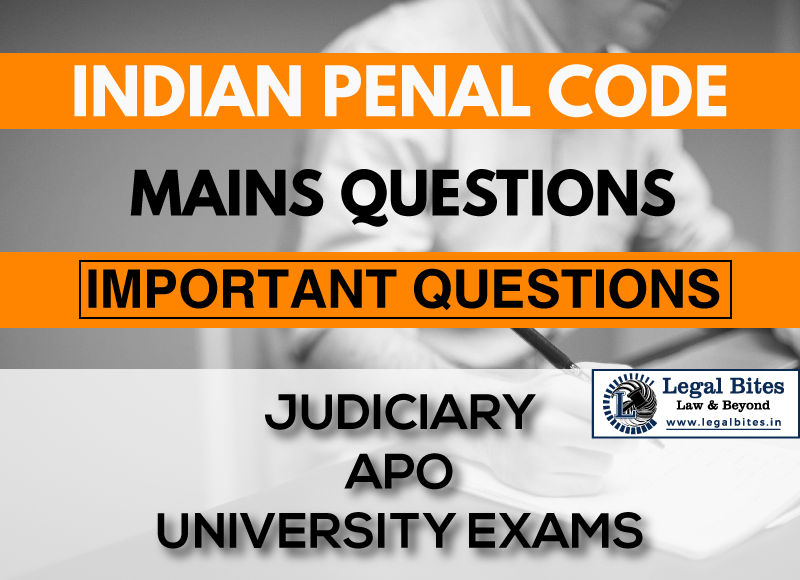A is restrained by B from proceeding in a ‘public street’. Has B committed the offence of ‘wrongful restraint’? Give reasons and also refer to the case law, if any, on the point.
Question: A is restrained by B from proceeding in a ‘public street’. Has B committed the offence of ‘wrongful restraint’? Give reasons and also refer to the case law, if any, on the point. Find the answer to the mains question only on Legal Bites [A is restrained by B from proceeding in a ‘public street’. Has B committed… Read More »
;Question: A is restrained by B from proceeding in a ‘public street’. Has B committed the offence of ‘wrongful restraint’? Give reasons and also refer to the case law, if any, on the point. Find the answer to the mains question only on Legal Bites [A is restrained by B from proceeding in a ‘public street’. Has B committed the offense of ‘wrongful restraint’? Give reasons and also refer to the case law, if any, on the point. Answer Section 339, IPC defines Wrongful...
Question: A is restrained by B from proceeding in a ‘public street’. Has B committed the offence of ‘wrongful restraint’? Give reasons and also refer to the case law, if any, on the point.
Find the answer to the mains question only on Legal Bites [A is restrained by B from proceeding in a ‘public street’. Has B committed the offense of ‘wrongful restraint’? Give reasons and also refer to the case law, if any, on the point.
Answer
Section 339, IPC defines Wrongful restraint as,
Whoever voluntarily obstructs any person so as to prevent that person from proceeding in any direction in which that person has a right to proceed, is said wrongfully to restrain that person.
Illustration
A obstructs a path along which Z has a right to pass, A not believing in good faith that he has a right to stop the path. Z is thereby prevented from passing. A wrongfully restrains Z.
In wrongful restraint, the physical presence of the accused is not always necessary. The essential ingredients of ‘wrongful restraint’ are:
- voluntary obstruction of a person, and
- the obstruction must be such as to prevent that person from proceeding in any direction in which he has a right to proceed.
Since, in the present case, A is restraining B, a person from proceeding in a particular public street, in which he has a public right to proceed, is said to have wrongfully restrained B.
Hence, A person here is guilty of wrongful restraint and is punishable under Section 341, IPC by simple imprisonment for a term up to one month, or a fine of up to five hundred rupees, or both.
In the case of Madala Perayya v. Varugunti Chendrayya (1954 CrLJ 283 Mad), the facts were that the accused and the complainant jointly owner a well and so both of them were entitled to use the water for agricultural purposes.
The accused stopped the complainant from using the water and also stopped the bullocks of the complainant from moving. The Court held that the accused had committed has the offense of wrongful restraint under Section 339.
Important Mains Questions Series for Judiciary, APO & University Exams
- IPC Mains Questions Series Part I: Important Questions
- IPC Mains Questions Series Part II: Important Questions
- IPC Mains Questions Series Part III: Important Questions
- IPC Mains Questions Series Part IV: Important Questions
- IPC Mains Questions Series Part V: Important Questions
- IPC Mains Questions Series Part VI: Important Questions
- IPC Mains Questions Series Part VII: Important Questions
- IPC Mains Questions Series Part VIII: Important Questions
- IPC Mains Questions Series Part IX: Important Questions
- IPC Mains Questions Series Part X: Important Questions





